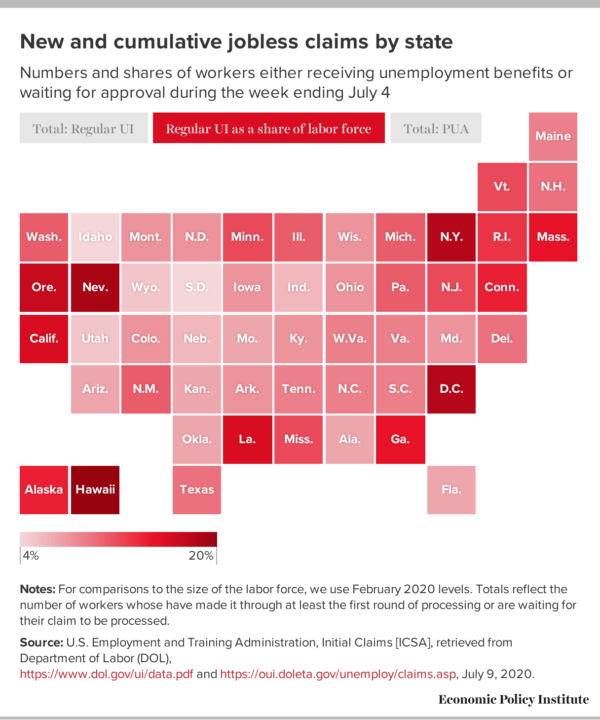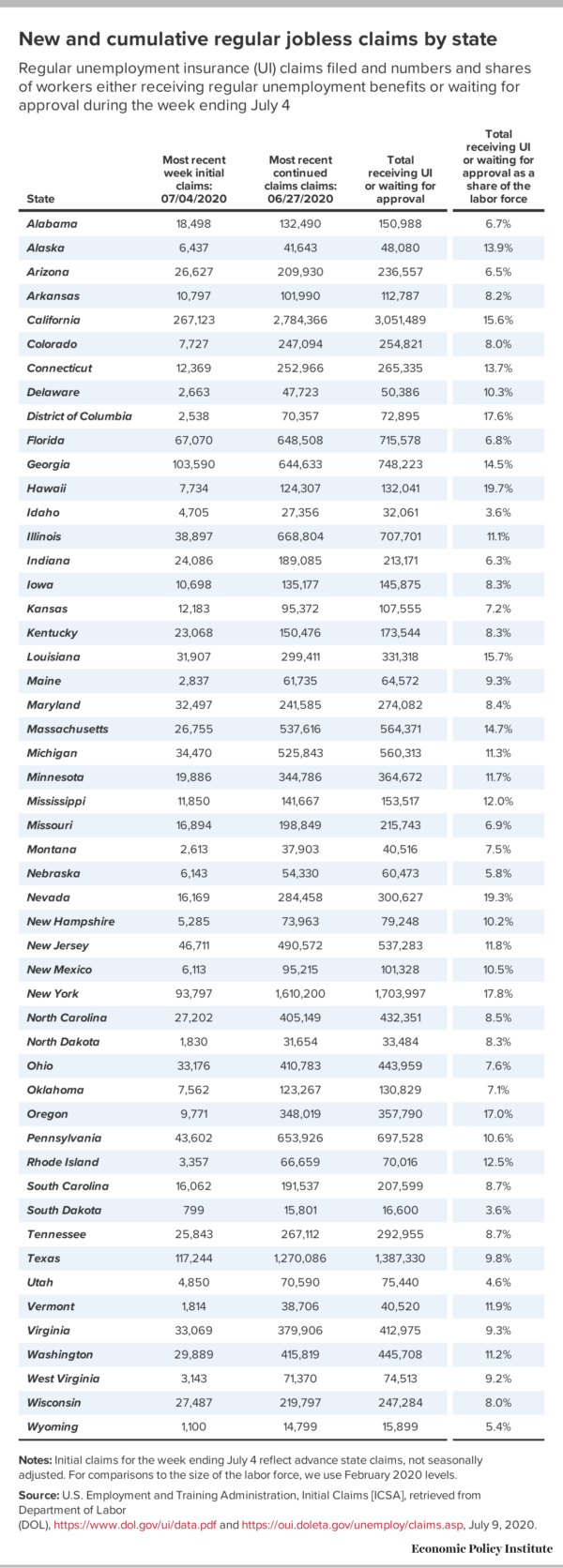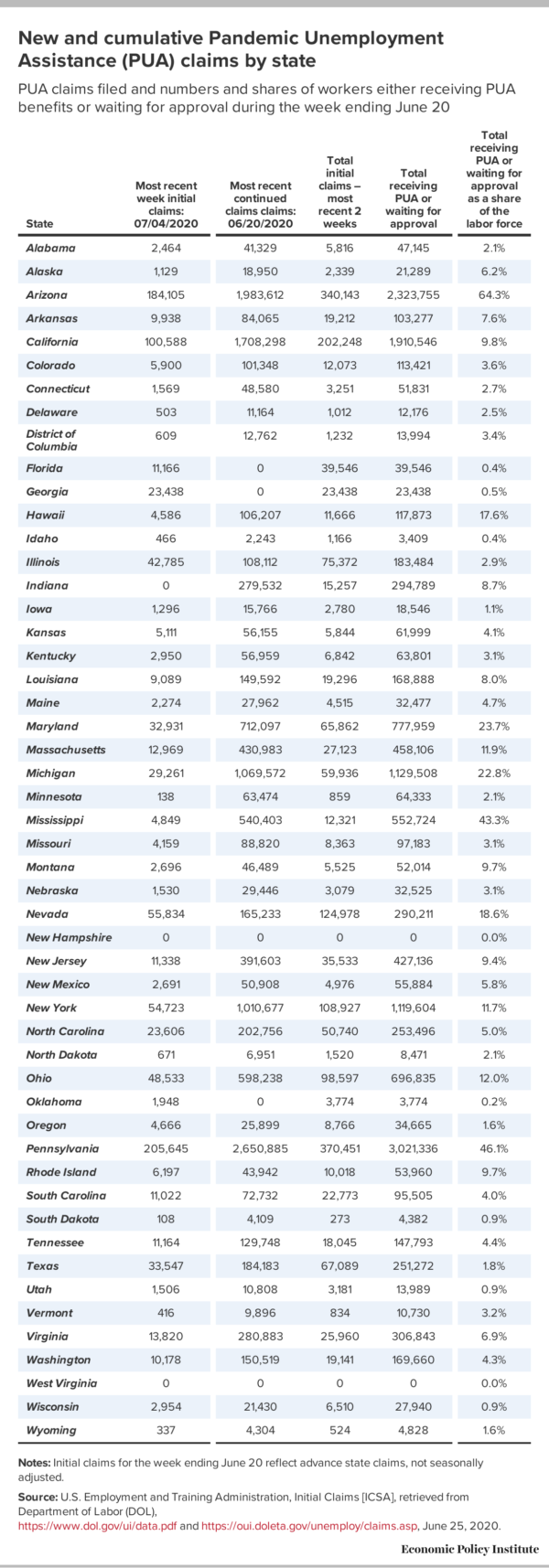There are many obstacles in finding a job in the United States. Some of these obstacles are socially constructed, such as more household responsibilities shouldered by women compared to men. Other obstacles are the result of a long discriminatory past, especially the immense inequality in household wealth between racial and ethnic groups. These obstacles inhibit workers from moving freely between jobs and thus give employers monopsony power—the power to push down wages when workers have few suitable outside options.
Because these obstacles more commonly confront women and non-White workers, employers have more power over such workers, which means employers can push their wages down more compared to White men workers. In a new working paper, we demonstrate how these racialized and gendered wealth disparities reinforce discriminatory pay penalties by examining how workers search for jobs. We find that institutional support for worker power—in the form of greater protections for collective action and a more pro-worker National Labor Relations Board that facilitates organizing through overseeing union elections and hearing unfair labor practice charges—can limit the ability of employers to exploit workers based on their gender or race and ethnic backgrounds.
But first, let's look at the corollary history of racial and gender wage gaps, which have been remarkably persistent. The gender wage divide converged somewhat in the 1970s and 1980s, but since the early 1990s, those gains have stalled. As of 2018, White women only earn around 79 percent of equivalent White men. And since at least the 1980s, the wage gap has widened between equivalent Black and White workers.
Furthermore, evidence suggests that wage disparities faced by Black women workers and Latinx women workers is greater than the sum of their racial-ethnic and gender components. These disparities demonstrate the existence of intersectional wage gaps.
The predominant model in economics to explain these differences is the human capital model, in which differences in earnings are presumed to reflect differences in "capital" allotments that result in productivity differences between workers. Yet this model is insufficient when describing changes over time and as human capital investments among groups of workers has changed. The failure of the human capital model to explain outcomes in the real economy is evident in the higher discriminatory wage penalties for Black workers compared to White workers with similarly higher levels of education. Audit studies likewise demonstrate how pay and hiring discrimination persists for equivalently productive workers.
Employers' wage-setting power, or monopsony power, may explain some of these persistent differences and how they have changed over time. Applying the original application of monopsony pioneered by the late British economist Joan Robinson to gender wage gaps explains why different rates of unionization between men and women affected wages. Robinson showed that employers are less able to extract monopsony rents for primarily male unionized workers. Limited subsequent research also found differences in labor supply elasticity between men and women and between Black and White workers.
Yet no theoretical extension of the monopsony model has been developed to illuminate the underlying dynamics that result in these outcomes. Our new working paper develops a theoretical monopsony model to explain these dynamics—a model that shows pre-existing disparities in individual wealth influence job search behavior. Workers with greater wealth are more able to navigate potential money shortfalls in the job search process and are thus more responsive to market signals. Conversely, lower levels of wealth decrease the level of the so-called reservation wage, or the wage level that is just enough to incentivize the worker to take a new job. Thus, more wealth among job candidates reduces employers' ability to push down their wages.
White workers, of course, are more likely to have access to more wealth due to the persistent wealth gap in the United States. In contrast, individuals with less household wealth, predominantly workers of color, are less able to weather potential household financial crises that could result from switching jobs.
Likewise, if women workers are constrained in their geographic job search due to household responsibilities, then fewer suitable job prospects will also reduce their ability to search for jobs. Thus, employers can exploit workers with lower household wealth and more household responsibilities more intensely, and it is profit maximizing to do so.
Empirical research demonstrates this multiplicative intersectional wage gap, and our theoretical model shows how these constraints to job search are greater than the sum of their parts, reducing wages offered to women of color workers under monopsony. Thus, the wages these workers receive represent discriminatory pay because two elements—systemic racism and misogyny—confront workers in the U.S. economy and American society in general.
Yet these wage disparities, and monopsony power more broadly, are moderated by workers' ability to act collectively as a countervailing force, and that kind of worker power is a function of institutional supports for collective action. Thus, policies that reduce monopsony power also will limit the ability of employers to exploit workers based on their race, ethnicity, gender, and other socially salient identities correlated with average wealth.
Our model is extended to include varying government support for collective action, in parallel with the model by one of the co-authors of our working paper, Mark Stelzner, along with Mark Paul at the New College of Florida, in the Equitable Growth working paper "How does market power affect wages? Monopsony and collective action in an institutional context." In our working paper, "Discrimination and Monopsony," we show that institutional support for organized labor is able to offset employers' monopsony power along racial, ethnic, gender, and intersectional lines.
In practice, proposed policies—such as the Protecting the Right to Organize Act (passed by the U.S. House of Representatives but stalled in the Senate in early 2020) that would expand the ability of unions to organize workers alongside institutions, including a more effective National Labor Relations Board, which upholds current U.S. labor organizing laws but is largely ineffectual—would limit employers' ability to exploit workers along multiple axes. The need for more pro-labor policies is increasingly evident as employers' monopsony power mounts, partially due to an anti-labor policy and institutional environment since the 1970s, and as racial and gender wage disparities remain persistent and are likely to worsen due to differences in unemployment amid the coronavirus pandemic.
In addition to policies aimed at balancing worker power, broader policies that reduce racial and gender wealth disparities and household constraints facing women workers also would increase the ability of workers to search for and match into better jobs at higher levels of pay. One of the most sweeping ideas for addressing racial wealth disparities are proposals for reparations, which would be targeted at wealth redistribution among the descendants of enslaved Black Americans, who continue to be negatively impacted not just by the devastating legacy of slavery but also by barely less violent and oppressive post-Civil War discrimination.
Family economic security policies are another pro-worker set of policies that help families manage care responsibilities, such as paid leave and accessible quality childcare. As long as women continue to take responsibility for the lion's share of family caretaking, these polices can increase women's ability to search more broadly for jobs and help reduce the gender wage gap.
Our model demonstrates how a variety of factors intersect to result in discriminatory wage outcomes for workers along the lines of race, ethnicity, and gender, and likewise shows that a suite of policies in tandem that address these broad constraints would lead to more efficient outcomes and higher levels of social welfare. Amid the life-altering circumstances brought about by the coronavirus recession and the subsequently swift shift in work-life balances among women frontline workers and workers of color in particular, pro-labor policies to strengthen collective action by workers in the United States is of paramount importance.






